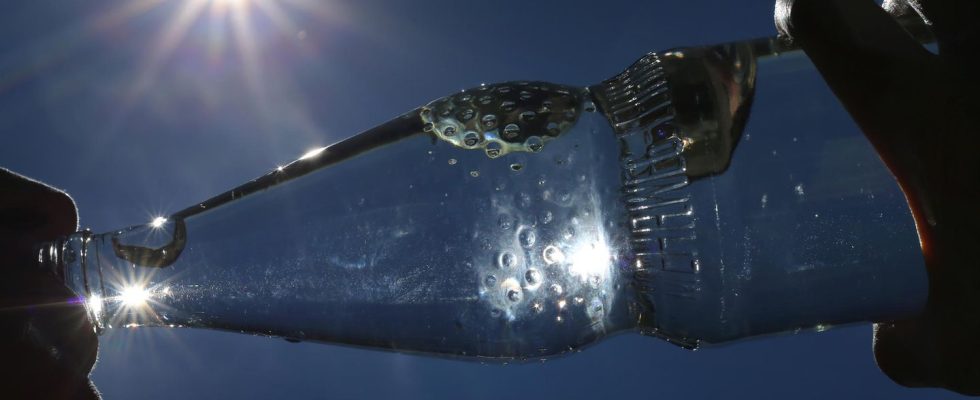50 mineral waters tested
Medium mineral water in the Ökotest: One fails with “insufficient”.
Ökotest examined 50 medium mineral waters for problematic substances, among other things
© Karl-Josef Hildenbrand
Many consumers prefer to drink mineral water than the cheaper tap water. In addition to the desired carbon dioxide, there is not only something good in mineral water, as a study by Öko-Test of 50 medium-sized waters shows.
This article first appeared on ntv.de
Mineral water is still in demand. In 2022, according to preliminary industry data, per capita consumption was just under 130 liters, as reported by the Association of German Mineral Springs (VDM). Around 50 years ago, on the other hand, Germans were significantly less thirsty for the drink – in 1970 consumption was just 12.5 liters per capita.
Amazing numbers. Especially since mineral water is actually just rainwater that has seeped through layers of rock to the source. On the way down, the water can then absorb minerals. Which is probably the main reason why people in this country resort to water. Because drinking tap water is much cheaper at 0.3 to 0.5 cents and the least harmful to the environment and climate. In addition, its quality is closely monitored.
But the consumer is unimpressed by such arguments and prefers to carry bottles. Medium versions with a medium level of carbonation are very popular. Öko-Test examined 50 medium mineral waters from different regions of Germany. At prices between 1.45 and 0.17 euros per liter.
Man-made impurities can cloud enjoyment
Of these, seven products were advertised as being “suitable for preparing baby food”. Six wore – sometimes additionally – a seal for organic mineral water. The testers had the mineral water tested for a number of possible problem substances in the laboratory, including nitrate, vanadium, arsenic, boron, uranium and chromium(VI), which is classified as carcinogenic. The elements can get into the mineral water from the rock strata that have passed through them naturally. In order to evaluate the original purity of the mineral waters, they were also analyzed for all degradation products of pesticides and residues of sweeteners. In addition, the declared content of dissolved minerals was classified.
Unfortunately, laboratory analyzes show that man-made contamination can cloud the “original purity” of mineral water. Even special claims such as “organic” or “suitable for the preparation of baby food” do not offer an absolute guarantee for freedom from controversial ingredients.
For example, the weighted sum of the radium values measured in the Bad Dürrheim medium was higher than that specified by its seal from the organic mineral water quality association. Apart from that, health damage is not to be expected here. Decomposition products of pesticides were also found in five of the mineral waters without a special claim. From the testers’ point of view, at least one so-called pesticide metabolite was “increased” in the “Alasia Medium”, in the “Salvus Mineralwasser Medium” and in the “Justus Brunnen Medium”. The latter also contained a sweetener; in the “Kastell Medium” the analysis revealed two sweeteners (“sufficient”).
Two test losers, many winners
The commissioned laboratory detected the carcinogenic chromium(VI) in five waters, which can get into the mineral water from soil and rock layers. The content in the “Berg Quellen Medium” (insufficient) was judged to be particularly critical, and the nitrate value was also slightly increased here, as in the “Oppacher Medium” (“inadequate”). Which names the test losers.
ecological catastrophe
More than half of the world’s largest lakes are permanently losing water – these are one of them
But at least 24 brands were rated “very good”. These include inexpensive products such as “Frische Brise Marius Mineral-Quelle Medium” (0.35 euros), Nature Park Source Medium (0.41 euros) or “Residenz Quelle Medium” (0.50 euros), which are mainly available in the respective region are available.

